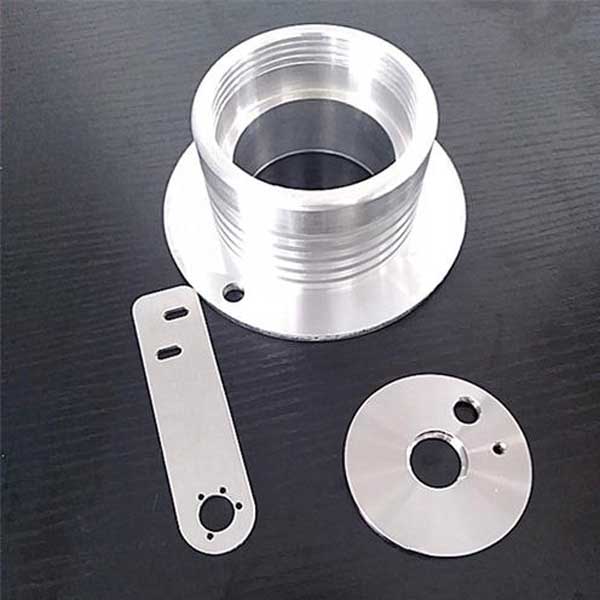
1.For parts with large machining allowance, in order to avoid heat concentration during processing, symmetrical processing should be adopted during processing. If a 90mm thick sheet needs to be processed to 60mm, if one side is milled immediately, the other side will be milled immediately, and the flatness will be 5mm once processed to the final size. The final size can ensure that the flatness reaches 0.3mm.
2.By changing the cutting amount to reduce cutting force and cutting heat. Among the three elements of cutting consumption, the amount of back-feeding has a great influence on the cutting force. If the machining allowance is too large, the cutting force of one pass is too large, which will not only deform the parts, but also affect the rigidity of the machine tool spindle and reduce the durability of the tool. If you reduce the amount of back-eating knife, it will greatly reduce production efficiency. However, high-speed milling in CNC machining can overcome this problem. While reducing the amount of back-feeding, as long as the feed is increased accordingly and the speed of the machine is increased, the cutting force can be reduced while ensuring the processing efficiency.
3. If there are multiple cavities on the plate part, it is not appropriate to use the sequential processing method of one cavity and one cavity during processing, which is likely to cause the parts to be unevenly deformed due to uneven force. Multiple layers are used for processing, each layer is processed to all the cavity as much as possible, and then the next layer is processed to make the parts evenly stressed and reduce deformation.
4. Thin-walled workpieces are deformed due to clamping during processing, and even finishing is unavoidable. In order to reduce the deformation of the workpiece to a minimum, the clamping piece can be loosened a little before finishing to reach the final size, so that the workpiece can be freely restored to its original state, and then slightly compressed, as long as the workpiece can be clamped, which can be Obtain the ideal processing effect. In short, the point of action of the clamping force is best on the support surface. The clamping force should act on the direction of the workpiece rigidity. On the premise of ensuring that the workpiece is not loose, the smaller the clamping force, the better.
5. Pay attention to the order of cutting. Rough machining emphasizes the improvement of machining efficiency, and the removal rate per unit time is pursued. Generally, reverse milling can be used. That is to cut off the excess material on the surface of the blank at the fastest speed and the shortest time, and basically form the geometric contour required for finishing. The emphasis on finishing is high precision and high quality, and it is appropriate to use down milling. Because the cutting thickness of the cutter teeth gradually decreases from maximum to zero during down-milling, the degree of work hardening is greatly reduced, and at the same time, the degree of deformation of the parts is reduced.
6. When processing parts with a cavity, try
not to let the milling cutter directly pierce the part like a drill when
processing the cavity, resulting in insufficient space for the chip of the
milling cutter and unsmooth chip evacuation, resulting in overheating,
expansion and chipping Broken knife and other unfavorable phenomena. First use
the same size or larger drill bit as the milling cutter to lower the hole, and
then use the milling cutter to mill. Alternatively, the CAM software can be
used to produce the screw-down knife program.